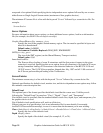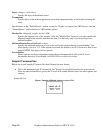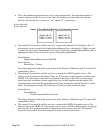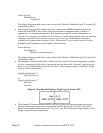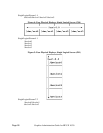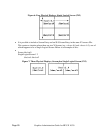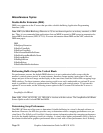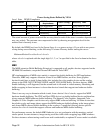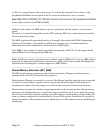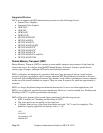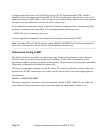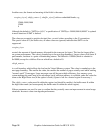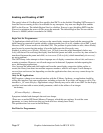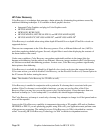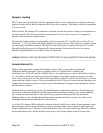
Power-Saving States Defined by VESA
Level State DPMS Compliance
Requirements
State DPMS Compliance
Requirements
Power Savings Recovery Time
0 Screen Saver Not Applicable None Very Short (<1 sec)
1 Stand-by Optional Minimal Short
2 Suspend Mandatory Substantial Longer
3 Off Mandatory Maximum System Dependent
The actual amount of power saved and the recovery time for each of the states is monitor-dependent and
may vary widely. The customer can compensate for this by choosing an appropriate level for the
monitor that is currently in use.
By default, the DPMS level used is the Screen Saver (i.e. no power savings). If you wish to use power
saving during screen blanking, set the following X*screens file entry before starting the server:
MinimumMonitorPowerSaveLevel <level>
where <level> is replaced with the single digit 0, 1, 2, or 3 as specified in the Level column in the above
table.
MBX
The MBX extension (Multi-Buffering Extension) is supported on all graphics devices supported on the
HP 9000/700 machines, except the PersonalVRX and the TurboVRX.
HP's implementation of MBX exists mainly to support fast double-buffering for PEX applications.
Therefore, MBX only supports allocation of one or two MBX buffers; no more. Some graphics
devices/visuals have a single 8-plane buffer; this includes the color graphics device and the overlay
planes on the CRX-24[Z], CRX-48Z, HCRX, and HP VISUALIZE family. For these devices, MBX
double-buffering is still supported, but the second bank is allocated in virtual memory. Rendering and
buffer-swapping in these instances is slower than devices/visuals that support true hardware double-
buffering.
There is no easy way to determine which visuals, from a device's list of visuals, support fast MBX
hardware double-buffering. The CRX and Dual-CRX device is a double-buffered device and therefore
always supports MBX hardware double-buffering. The Internal Color Graphics, Integrated Color
Graphics or Color Graphics card devices only support MBX software buffering. All other devices that
have both overlay and image planes support fast MBX hardware double-buffering in the image planes
and slower MBX software double-buffering in the overlays. Consult the following device-specific
sections for a list of visuals that support software and hardware MBX double-buffering.
For performance reasons, the default MBX behavior is to not synchronize with the monitors vertical
retrace period. In some instances, image tearing could be visible while swapping large MBX windows.
For those instances where tearing would occur and is undesirable, an optional X server mode is available
Graphics Administration Guide for HP-UX 10.20
Page 32



